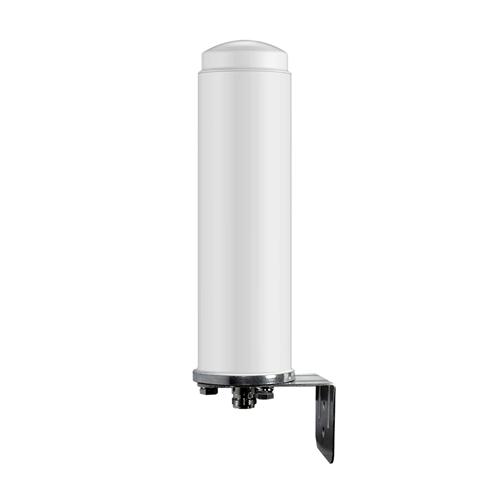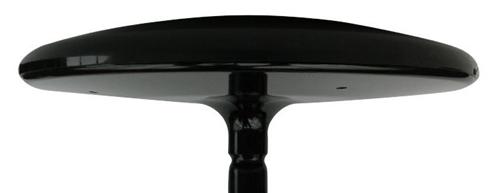What you see above you isn’t a satellite dish. It’s an omnidirectional TV antenna. Why? Because there is no such thing as an omnidirectional satellite dish and it’s pretty likely there never will be.
I was recently asked on YouTube if it was possible to have an omnidirectional satellite dish. I invited the commenter to our forum so we could discuss the subject. Unfortunately they never came. So I decided to take all the arguments I’d saved up and turn them into an article.
How an omni antenna works
An omnidirectional antenna pulls in an equal signal from all directions. Actually, not really “all” directions. Omni antennas don’t do well picking up signals from above and below. They are designed to pick up signals from all directions on a 2-D plane. In other words, from north, south, east and west.
You can accomplish this by arranging several traditional antennas in a circle so that there is effective reception from any angle.
From the side, these antennas usually look like flying saucers. Viewed from the top, a typical omni antenna would look something like the symbol of the Galactic Empire from Star Wars:

Another form of omni antenna, usually used for broadcasting, uses a coil wrapped around a thick outer shell. This sort of antenna looks fairly nondescript, especially when covered in a fiberglass shell to avoid oxidation:

None of these are satellite antennas
Everything I’ve shown you above are antennas for some sort of terrestrial broadcasting, whether TV or cellular. That’s because, as I said, there’s no such thing as an omnidirectional satellite antenna. Satellite antennas are parabolic, meaning there’s a big dish that focuses all the signal on a tiny receiving element. You know, like this:

Parabolic antennas are much more effective than other antennas at certain frequencies. This diagram shows how all the signal that comes in and hits the antenna is focused on one area:

This sort of design does work with television antennas but it’s not as effective. It’s very effective for the tiny waves used by satellite signals, however. And that’s good because without a really effective antenna, a satellite signal wouldn’t have a chance.
The difference between satellite and terrestrial broadcasting
All radio signals are going to be very weak by the time they get to you. Even a strong signal is just a few hundredths of a watt, despite starting as high as 50,000 watts. Cellular signals start out weaker, but the towers are close, usually within 1-2 miles. TV and radio transmitters range from a few miles to 50-75 miles. On the other hand a satellite signal comes from over 22,000 miles away.
Any radio signal is going to get weaker as it travels, and after 22,000 miles that signal is so incredibly weak it’s amazing that you can detect it at all. Using a parabolic antenna design and a set of complex electronic parts makes it possible for that super-weak signal to get to you.
And here’s the bottom line…
Even for radio and TV reception, omni antennas aren’t as good as directional antennas. They’re always a second choice… when you can you should always choose a directional antenna. When you compare the amount of signal received by an omni antenna with the amount received by a parabolic antenna, it’s night and day. And really like I said you need that extra gain just to receive anything.
So until there’s some major change in the way satellite signals come down from the sky, you’ll be aiming that satellite dish instead of just putting up an omnidirectional antenna.





